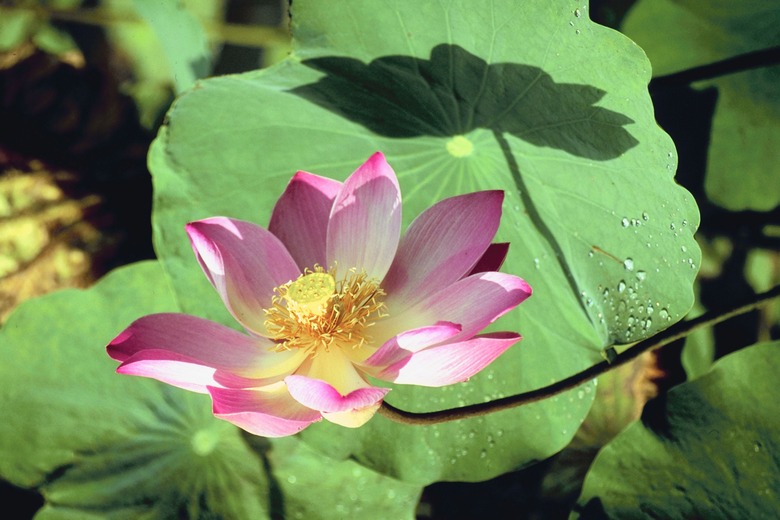What Does The Lotus Flower Smell Like?
The showy water plants most commonly called "lotus" belong to one of two species contained within the genus Nelumbo. Nelumbo lutea is native to the eastern half of North America and produces large yellow flowers. Nelumbo nucifera, or sacred lotus, is a native of South Asia and Australia and produces large flowers in shades of rose, pink and white. The flowers of both species are fragrant, though the intensity and fragrance profile differs depending on the variety. Overall, lotus fragrance is generally described as "pleasant," "heady," "fruity," or "sweet."
Nelumbo nucifera
Naturalized widely in Asia, the sacred lotus is the more commonly grown of the two Nelumbo species. The plants grow in ponds and streams from an underground rhizome or fleshy root. In cultivation, they are usually grown in submerged pots, to avoid uncontrolled spread. The fragrant flowers can be as wide as 1 foot across. Unlike waterlilies, which sit atop leaves on the water's surface, lotus grow atop tall stalks that can rise to 6 feet or more. The pervasive fragrance of the flowers has made them an ingredient in perfumery for centuries.
Nelumbo lutea
Because it is native to the New World, Nelumbo lutea does not link to the sacred lily's long chain of historical associations. Its flowers are somewhat smaller than those of Nelumbo nucifera, but the plants may be more floriferous. Like its Asian relative, the plant flowers in the summer, thriving in the slow moving water of ponds and streams as far south and west as Texas. The rhizomes were used as food by some Native Americans.
Perfume
The beauty and fragrance of lotus flowers have made them favorites in many cultures, including those of ancient Egypt, China, Persia and India. In some Asian cultures, a perfume was made from the petals. Though traditional lotus perfume is still available in some places, it is now most often made with a combination of synthetic and natural fragrance elements — but no actual lotus. Traditional perfume boxes from the Middle East and Asia were often decorated with lotus flower motifs.
Culture
Lotus can be grown in a pond or by the side of a pond. Either way, the lotus should be grown in a container, which can be filled with ordinary garden soil or soil topped with a layer of sand. Avoid soil-free potting mix, as it will float away. The tuber has a fatter end and a thinner one, from which the growing tip will emerge. Place the tuber on the soil and cover, making sure the growing tip is above the soil line. Cover with a layer of fine gravel, keep the tip exposed and submerge.
References
- Illinois Wildflowers: Sacred Lotus
- The Royal Botanic Garden at Kew: Plant Cultures: Lotus
- "Indoor and Greenhouse Plants, V 1": Roger Phillips and Martyn Rix; 1997
- "Hortus Third": Liberty Hyde Bailey, Ethel Zoe Bailey, et al.: 1976
